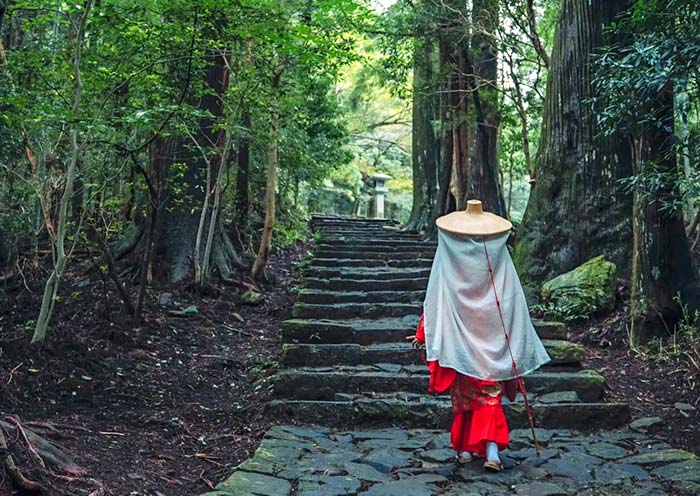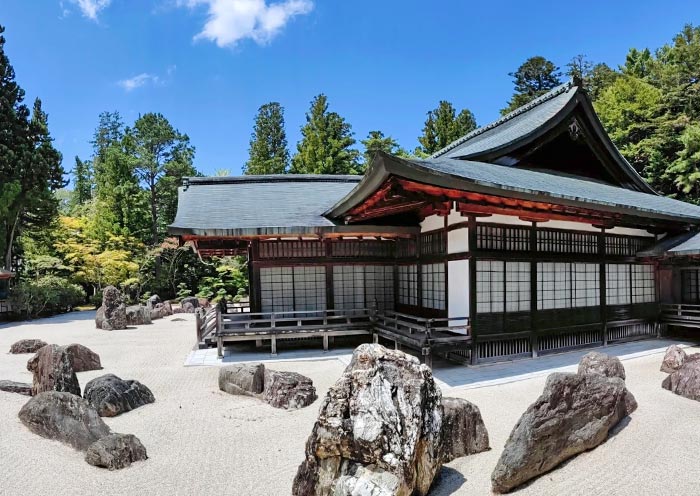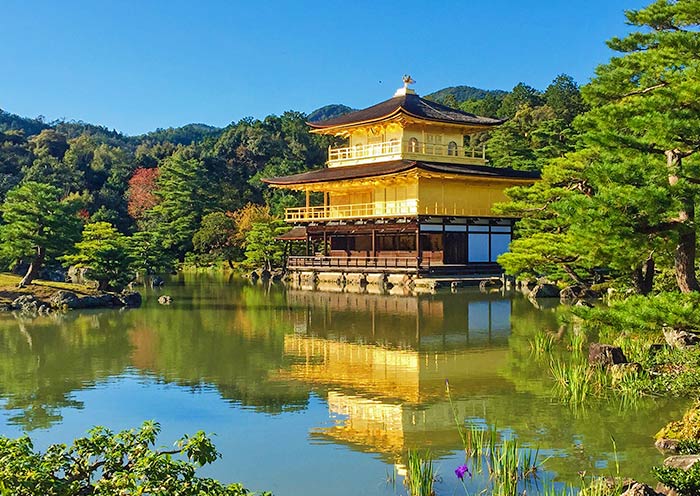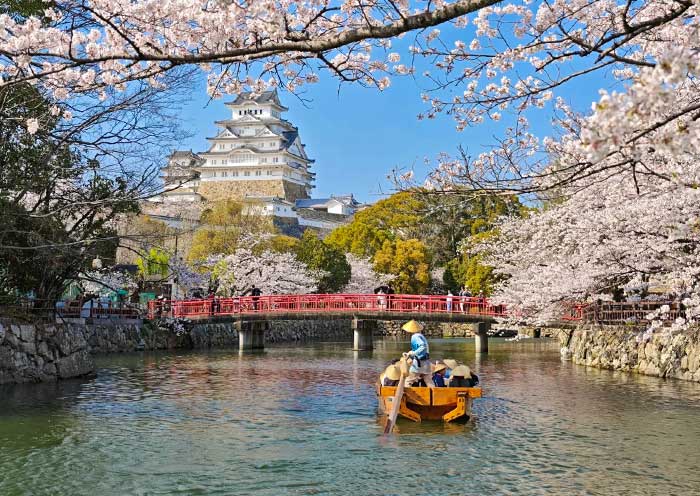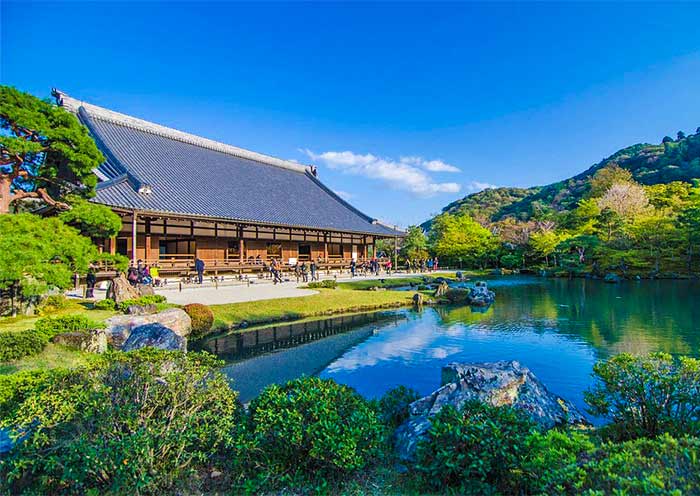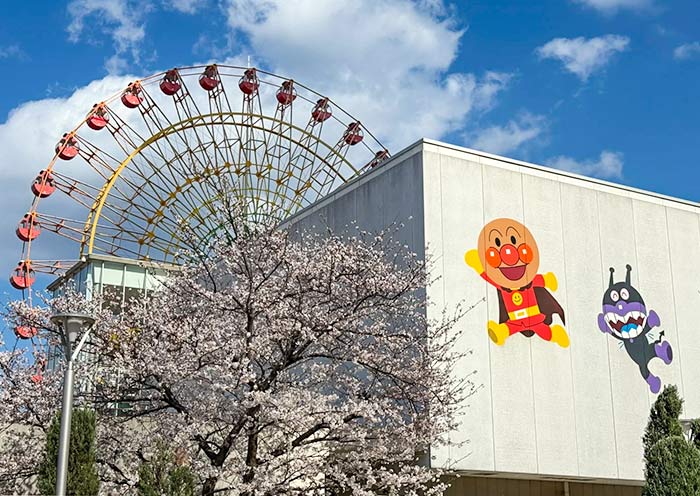9 Days Western Japan Tour with Kumano Kodo Hike, Mount Koya Hike & Onsens
From
USD Request![]()
- This is the price per person, based on a group of 6 people, 4-star hotel accommodation, and travel during the regular season.
- Early-bird rates apply to bookings made at least 6 months prior to the departure date.
- The price is subject to change depending on your travel season, group size, hotel class, and potential fluctuations in currency exchange rates.
- Highlights
- Itinerary
- Price
- Trip Notes
- Accommodation
- Photos
- Reviews
Classic Kansai Tour Package with Hiking on Kumano Kodo Pilgrimage Route
Discover the heart of Western Japan with our soul-stirring 9 Days Kansai Odyssey from Osaka, blending ancient trails, UNESCO sacred sites, hot spring relaxation, unique Japanese food, and warm hospitality. Perfect for hikers, history lovers, and onsen seekers!
Our Western Japan Tour will hike the historic Kumano Kodo Nakahechi Trail (World Heritage), where mossy stone steps lead to famous shrines like Kumano Hongu Taisha and the thundering Nachi Waterfall (Japan's tallest). Hike through the misty forests/cemetery of Mount Koya (World Heritage), a spiritual haven with Zen gardens and serene temple stays - including Shojin Ryori (Buddhist vegetarian cuisine). Soak in Onsen’s healing waters, don Heian-era kimonos for photos, and dive into local markets like Katsuura’s lively tuna auctions (tuna sushi).
Our Classic Kansai Tour Package includes the top destination in west Japan. In Kyoto, wander the golden Kinkaku-ji, the bamboo forests, and Fushimi Inari’s red gates. Kobe delights with mountain views, Kobe beef, and ocean views from the Akashi Strait Bridge. Osaka energizes you with street food buzz!
Book your 9 Days Western Japan tour today - pilgrimage trails, mountains, ports, temples, waterfalls, onsens, and tastes await! This tour weaves culture, nature, and flavor—your ticket to Japan’s most unforgettable stories.
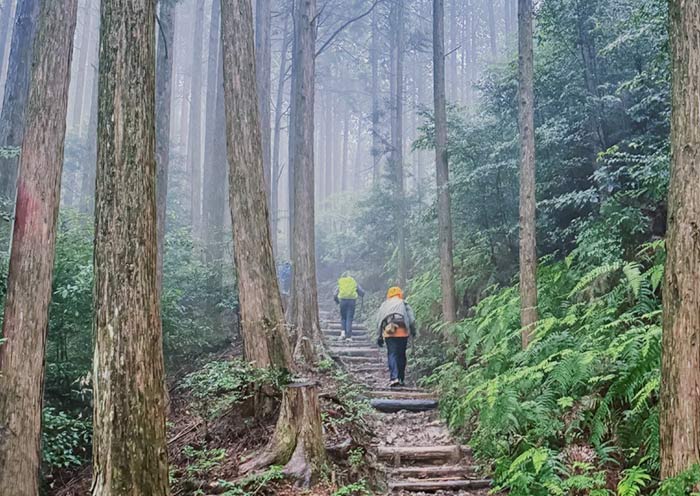
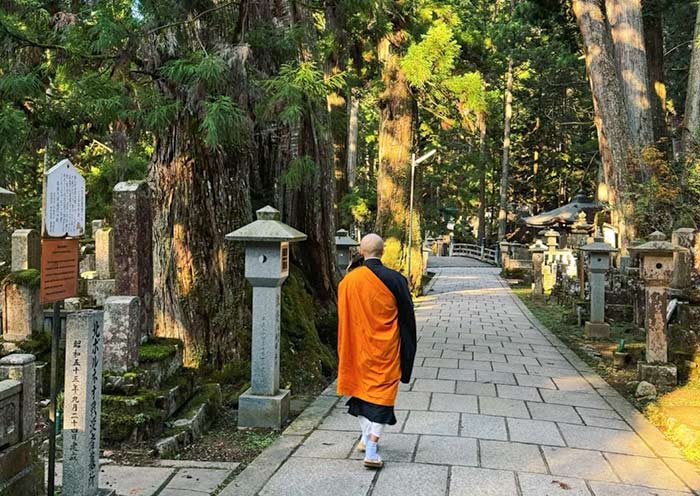
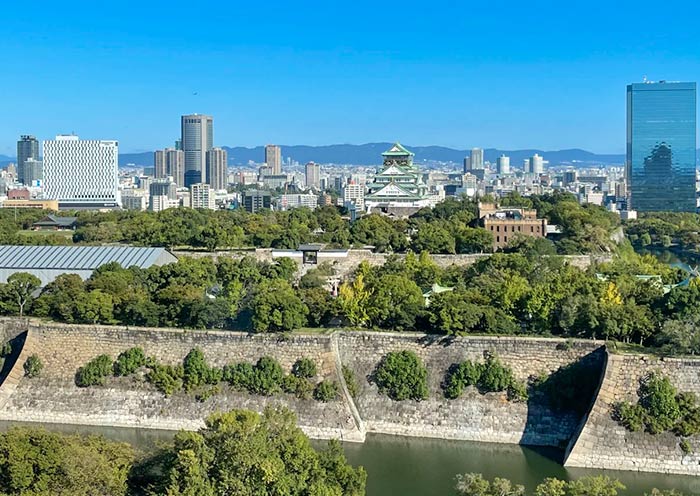
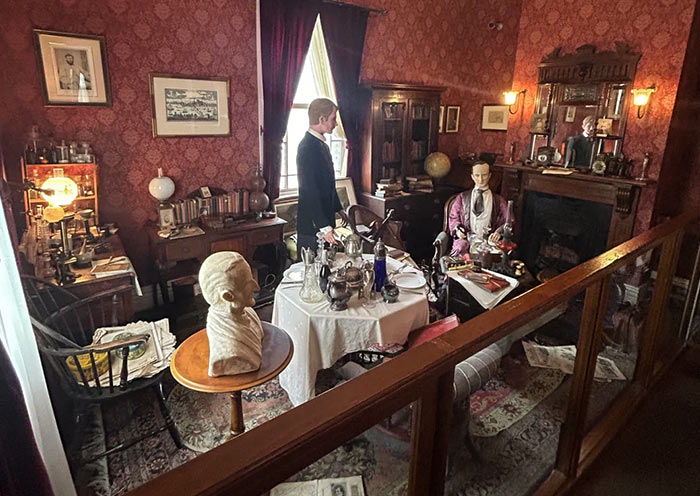
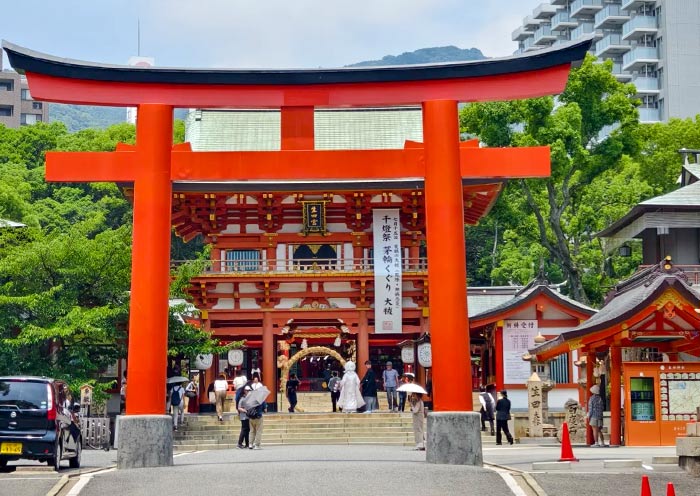
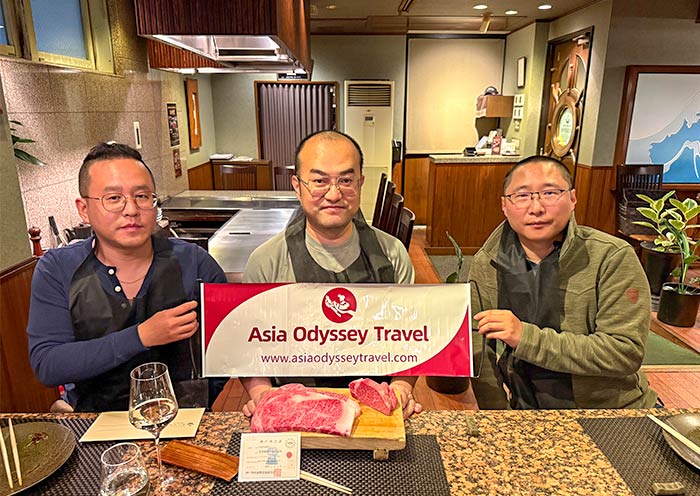
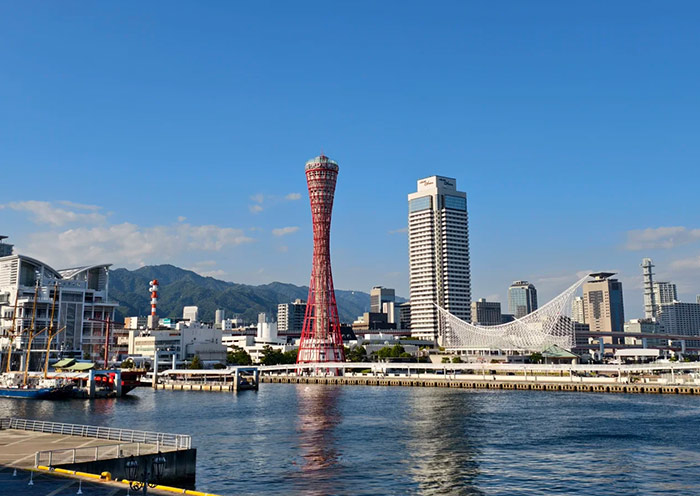
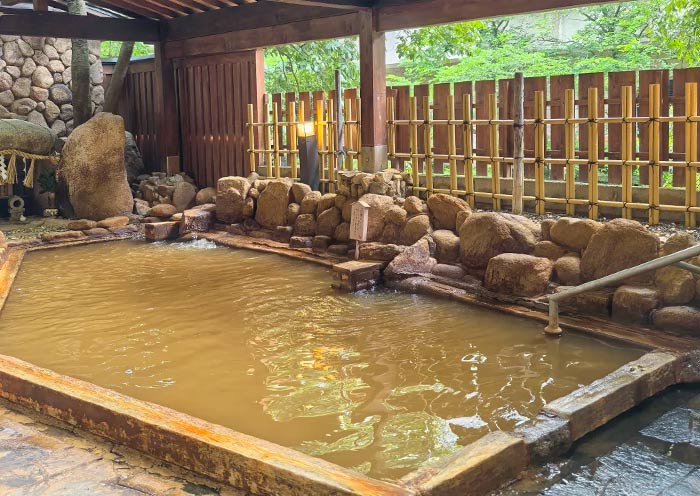
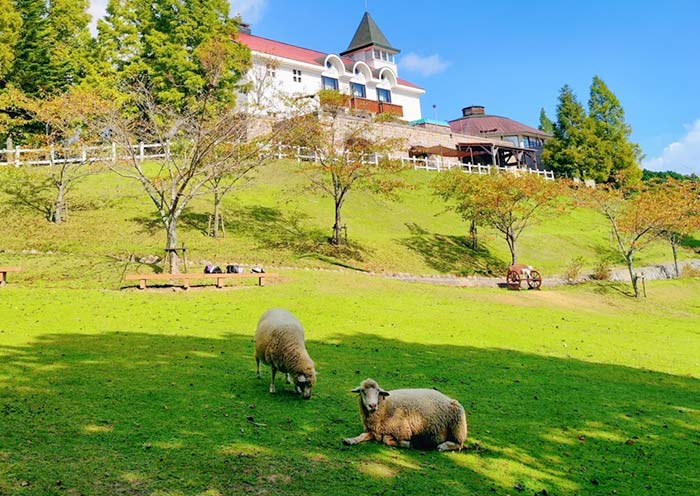

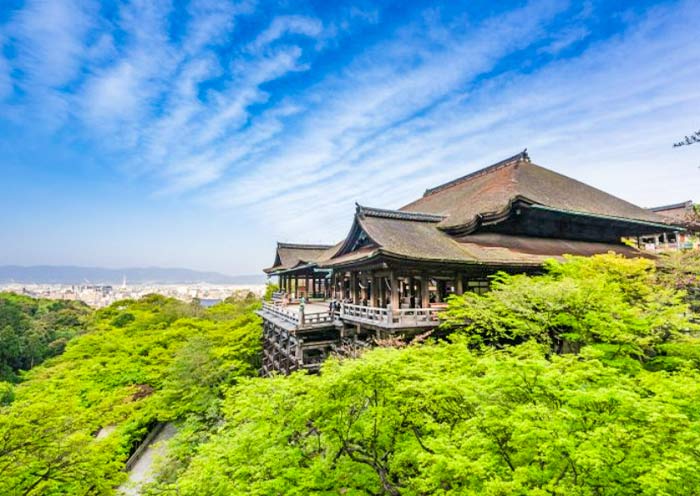


Itinerary at a Glance
Osaka (1 Day)
Free Time Explore (Dotonbori, Shinsaibashi Shopping Street, Osaka Castle Park)
Kobe (2 Days)
Kitano-cho District, Ikuta Shrine, Sannomiya Station (Kobe Beef; Lunch Optional), Meriken Park, Arima Onsen, Rokkosan Pasture (Closed on Tuesdays), Nankinmachi (Chinatown), Maiko Marine Promenade (Akashi Strait Bridge)
Kyoto (2 Days)
Fushimi Inari Taisha Shrine (World Heritage), Kiyomizu-dera Temple (World Heritage), Ninenzaka & Sannenzaka, Yasaka Shrine, Gion, Kinkaku-ji Temple (World Heritage), Sagano Scenic Railway, Arashiyama Bamboo Grove, Tenryu-ji Temple (World Heritage), Togetsukyo Bridge
Koyasan of Wakayama (1 Day)
Short Hike at Mount Koya (World Heritage Site): Okunoin Temple (Cemetery), Kongobu-ji Temple (Zen garden), Danjo Garan, Koyasan Temple Lodging (Taste Shojin Ryori)
Kumano Kodo of Wakayama (2 Day)
Hike on Kumano Kodo (World Heritage; Nakahechi Trail): Kumano Hongu Taisha, Kumano Hayatama Taisha, Cave Onsen (Optional), Tuna Market (Optional; Closed on Saturdays), Kumano Nachi Taisha, Seiganto-ji, Nachi Waterfall, Heian-era kimono Experience (Optional)
Osaka (1 Day)
Departure
Itinerary Day by Day
Welcome to Japan! Upon your arrival at Osaka's Kansai International Airport, our representative will greet you with a sign bearing your name right at the arrivals gate. Then he will transfer you to your carefully selected hotel in Osaka. Check into your hotel and take some time to settle in and refresh. The rest of today is free for you to explore the local surroundings at your own pace.
Osaka, as Japan's third-largest city and a major economic hub, is renowned for its rich history, diverse cuisine, unique culture, and strong economic power. The city exudes a distinct sense of humor and an open, warm personality, making it exceptionally vibrant and colorful compared to other cities. Across its vast concrete expanse, dazzling neon lights and brightly colored storefronts illuminate the lively nightlife and irresistible culinary scenes. Known as the "nation's kitchen," Osaka is the birthplace of many Japanese culinary delights.
Arrival Ideas:
1. By Flight: Kansai International Airport (KIX) is the main international gateway to the Kansai region of Japan. It hosts direct flights from major cities across Asia, Europe, North America, and Australia. In addition to international routes, KIX offers a wide range of domestic flights connecting Osaka with major Japanese cities like Tokyo, Sapporo, Okinawa, and Fukuoka.
2. By Shinkansen (Bullet Train): Shin-Osaka Station is the city’s shinkansen station. It can be reached via a short train ride from major cities like Tokyo, Nagoya, Hiroshima, and Fukuoka, making it a convenient option if you’re traveling from other parts of Japan.
Free Time Ideas:
1.You can explore the Umeda district on your own, visiting the Umeda Sky Building for panoramic views of the city from its Floating Garden Observatory. As the sun sets, the city lights up, providing spectacular views and a perfect backdrop for your first night in Japan.
2.Kamigata Ukiyoe Museum offers a fascinating glimpse into the traditional Japanese art form of ukiyo-e.
3.Shinsekai (New World) & Tsutenkaku Tower: Shinsekai, meaning "New World," is a nostalgic and unique shopping district in Osaka, known for its retro vibe, old-school charm, and vibrant atmosphere. Originally built in 1912, Tsutenkaku Tower offers views of the Osaka skyline and is located in the retro-themed Shinsekai area.
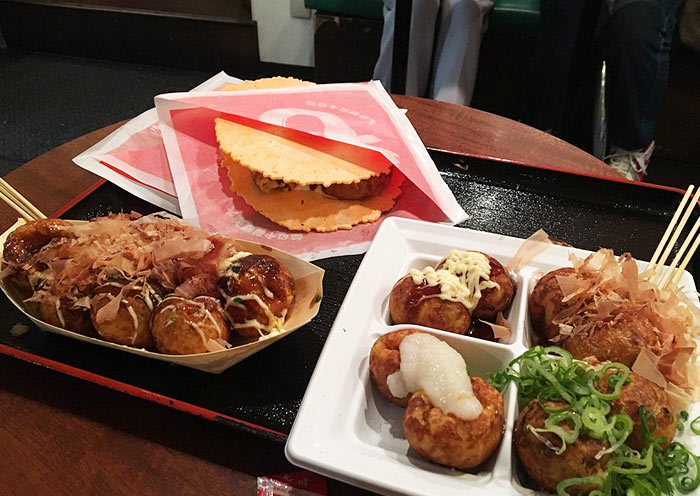
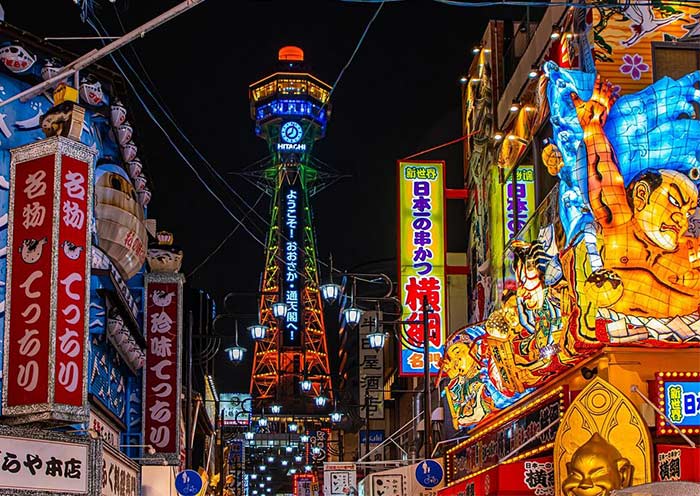
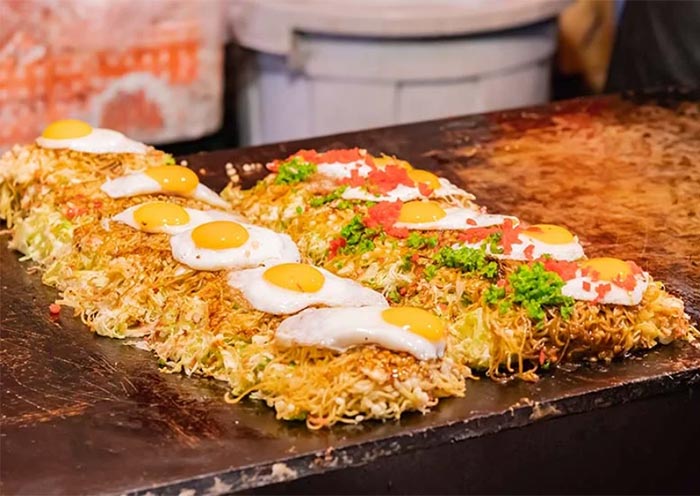
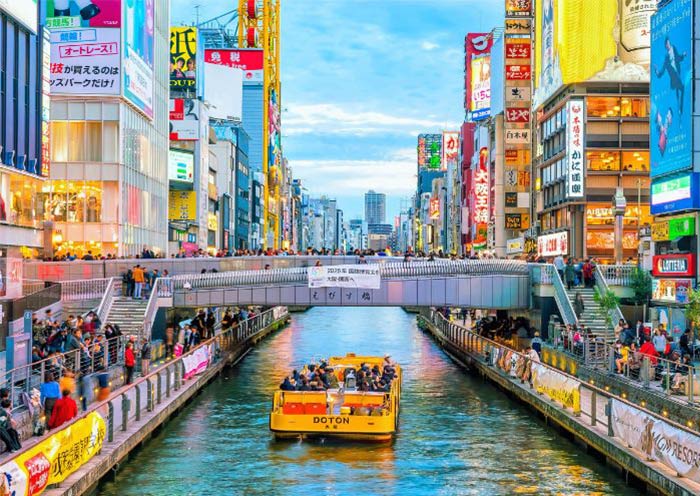
Enjoy Kobe Day Tour from Osaka, Explore top attractions in Kobe, such as Kitano-cho District (Western-style Architectures & history of Kobe Port), Ikuta Shrine (God of Marriage), Sannomiya Station Street (Kobe Beef & local food), and Meriken Park (view modern landmarks of Kobe).
The Kitano-cho District (Kitano Ljinkan-gai北野异人馆街区) is a must-visit attraction in Kobe, renowned for preserving over 30 Western-style century-old buildings. After Kobe Port opened as a trading port to the outside world in 1868, traders, diplomats, and missionaries from various countries flocked in and built residences on the slopes of Kitano-cho (such as the British Residence, Italian Residence, German Residence, American Residence, French Residence, Chinese Residence, etc.), which later became known as "Foreigners' Residences异人馆." Today, these old houses, blending Gothic, Victorian, and other styles, have mostly been transformed into museums, galleries, or art centers. They are also popular spots for locals to take wedding photos and for anime fans to visit anime scenes.
While strolling through the old district, you cannot miss the Weathercock House (风见鸡馆) with its bronze rooster weathervane atop a red brick spire. It is a landmark of Kobe and was the former residence of the 19th-century German merchant, Thomas. Passing by the Moegi House (萌黄之馆) with its striking mint green exterior, which was once the American Consulate, is also a highlight. You can relax and enjoy a cup of coffee at the "Most Beautiful Starbucks in Japan," feeling the laid-back atmosphere. Don't forget to try the Matcha and Milk swirl ice cream of Rokko Ranch while you're there.
Tip: The Kitano-cho District is free to enter, but separate tickets are needed for admission to individual houses/Residences. It is recommended to opt for the 3-in-1 ticket based on your time and interests (at your own expense).
Then, walk to Ikuta Shrine (生田神社), a highly effective Japanese shrine for praying for love and marriage. It has a history of over 1,800 years, making it one of Japan's oldest shrines. Its name is also related to Kobe. The shrine's original name was "Kanbei," which gradually transformed into the present-day city name "Kobe." Despite being located in the bustling district of Kobe, Ikuta Shrine is like an "urban oasis"—housing the ancient "Ikuta Forest生田之森" that's over a thousand years old. Nice for a relaxing stroll.
The main enshrined deity at the shrine is "Wakahiru-me稚日女尊," who is the younger sister of the sun goddess Amaterasu, governing light, creativity, weaving, and symbolizing "youth and vitality." Legend has it that she plays matchmaker while weaving, hence she is known as the "God of Marriage姻缘之神". You can experience a unique "Water Divination Fortune水占签": purchasing a piece of paper from the shrine maiden, floating it in the waters of the Golden Dragon Spring, where a mysterious prophecy gradually emerges. You can also buy an Ema (绘马wooden plaque for wishes), write desired wishes (for relationships, peace, health, etc.), believed to be particularly effective. If lucky, one might even witness a local wedding ceremony taking place here!
At lunchtime, you can explore the streets around the Sannomiya Station (神户三宫站), which is famous for locals to enjoy the famous Kobe Beef and other delicious Japanese food. Kobe Wagyu Beef is incredibly famous! It is known for its delicate texture, beautiful marbling, and rich, flavorful taste, often referred to as the "Rolls-Royce of Beef." (PS: The name "Kobe" actually comes from here—his father, Joe Bryant, dined at a Japanese restaurant in Philadelphia, where he particularly enjoyed the Kobe beef and decided to name his son "Kobe".)
In the afternoon, time to explore Meriken Park (美利坚公园). Meriken Park used to be a dedicated port for foreign steamships, but in 1987, it was transformed into a seaside park specifically to commemorate the 120th anniversary of Kobe Port's opening. The term "Meriken" in the name is a phonetic translation of "American" during the Meiji era. One of the park's most popular spots is the "BE KOBE" photo spot, established to celebrate the 150th anniversary of Kobe Port's opening. The park also houses the Kobe Maritime Museum, designed to resemble a ship just setting sail with its sails raised, which is quite interesting. The park offers a great vantage point for viewing the Kobe Port Tower, a Kobe landmark standing at 108 meters tall. You can climb to the top observation deck for panoramic views of the entire cityscape (self-pay). A section of the park also preserves a damaged pier from the 1995 Great Hanshin Earthquake as a memorial to the disaster, reminding everyone to cherish the present.
After a stroll, you can take a break with a cup of coffee before exploring the modern art installations and sculptures within the park, enjoying a relaxing walk in the sea breeze. In the evening, the park hosts a light show accompanied by music and fountains, creating a romantic atmosphere.
At last, head to Arima Onsen. Arima Onsen is the oldest hot spring in the Kansai region of Japan and is one of Japan's three most famous hot springs (alongside Gero Onsen and Kusatsu Onsen). It was established by Buddhist monks as a place of recuperation as early as the 8th century.
The most famous features of Arima Onsen are its "Kinsen" (gold spring) and "Ginsen" (silver spring) waters. Kinsen contains rich iron and sodium, turning rusty in color upon contact with air, hence its name. Locals believe it has notable effects on cold intolerance, lower back pain, joint pain, and skin moisturization. Ginsen, a colorless and tasteless carbonated spring, is beneficial for individuals with high blood pressure and poor arterial circulation, and it can also improve appetite. The hot spring street still retains its traditional Japanese charm, with numerous hot spring inns, tea houses, and shops selling local specialties along the way, making a leisurely stroll particularly enjoyable.
Stay overnight in Kobe.
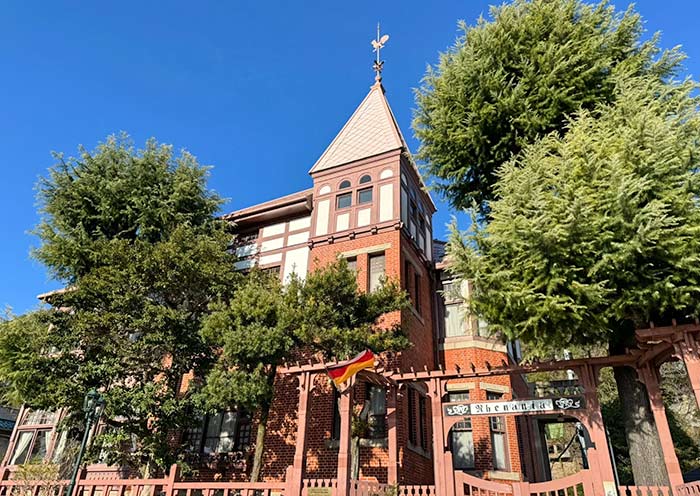

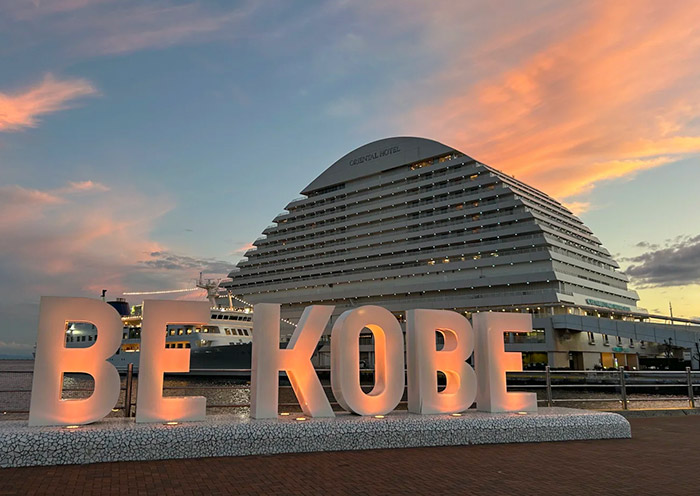

Kobe Day Tour from mountain to Sea. View Kobe from Rokkosan Pasture, try local food at Nankinmachi (Chinatown), stroll at Maiko Marine Promenade to enjoy the sea view & Akashi Strait Bridge.
In the morning, head to Rokkosan Pasture (Closed on Tuesdays). Nestled atop Mount Rokko, Rokkosan Ranch offers a delightful escape into nature. The panoramic views of the Kobe and the Akashi Strait make it a perfect spot for families and nature lovers. This family-friendly ranch offers immersive animal encounters. Feed calves with special bottles, pet free-roaming sheep, interact with goats/rabbits, and do horseback riding. Do not forget to try the fresh dairy treats like ice cream.
Note: Usually, you need to take a bus/car, a small train, a cable car & a sightseeing bus to reach Rokkosan Ranch. The different modes of transportation also make your Rokkosan Ranch trip a unique experience.
Then, you can have a walk at Nankinmachi, one of the largest Chinatowns in Japan. The district features traditional Chinese-style buildings, creating a distinctive atmosphere, and is home to a wide variety of Chinese restaurants serving authentic dishes from different regions of China. Enjoy your Chinese food adventure.
In the afternoon, pay a visit to Maiko Marine Promenade - a part of Akashi Strait Bridge (3,911 m). Located in Kobe’s Maiko Park, it is a picturesque coastal walkway offering panoramic views of the Akashi Strait and the iconic Akashi Kaikyo Bridge. Stroll its 317-meter circular path (47 m above the Seto Inland Sea), you will marvel at the jaw-dropping views of the ocean and engineering marvel beneath your feet. This unique walkway features sections with glass floors, giving you a thrilling view of the waves below. A must for fearless sightseers!
If time permits, with just steps away, Maiko Park provides serene green spaces, photo-perfect bridge vistas, and access to the historic Sun Yat-sen Memorial Hall (self-pay).
Note for Maiko Marine Promenade: Closed on Every second Monday of the month (from October to March), if it falls on a national holiday, it will be closed and will resume the following day.
After that, head to Kyoto.
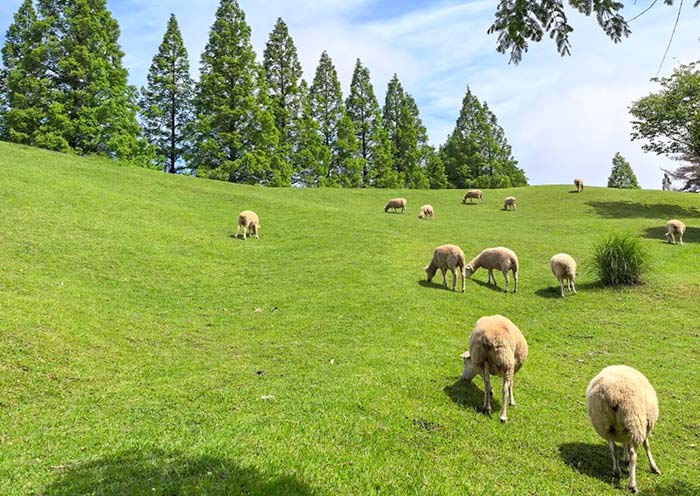


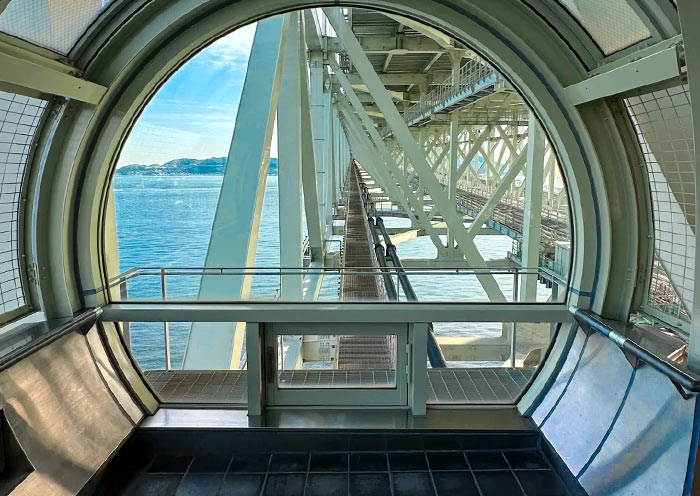
Kyoto, once the capital of Japan, epitomizes ancient Japan. Boasting 17 UNESCO World Heritage sites, over 1,000 Buddhist temples, and more than 400 Shinto shrines, Kyoto is among the world's most culturally rich cities. Known for traditional arts like tea ceremonies, kaiseki dining, and ikebana (flower arranging), Kyoto is also one of the best places to observe geishas.
Start morning in Kyoto bright and early at one of its most iconic sites - the Fushimi Inari Taisha Shrine to beat the crowds.
Fushimi Inari Taisha Shrine is famous for its thousands of vermilion torii gates, known as Senbon Torii (“thousands of torii gates”). Layers upon layers of vermilion torii gates line the lush, wooded hillside, forming a seemingly endless corridor. The vibrant orange and black gates contrast beautifully with the surrounding greenery, creating a visually stunning and almost otherworldly path that is highly photogenic.
Fushimi Inari Taisha was founded in the early 8th century (711 AD) and is primarily dedicated to Inari, the Shinto god of rice, fertility, sake, agriculture, and industry. As you explore the shrine, you will encounter hundreds of fox statues. Said to be the messengers of the god Inari, who is associated with cereal grains, these fox statues often symbolize the deity. Many of these fox statues are depicted holding a key in their mouths, which is said to open the granary.
Tips: Hiking to the summit of the mountain and back will take two to three hours, but many people go only as far as the Yotsutsuji intersection because there are fewer torii gates beyond this point. It will take 30 to 40 minutes to reach Yotsutsuji.
Next, visit Kiyomizudera Temple, a UNESCO World Heritage Site. Perched on the hillside of Eastern Kyoto, this temple is renowned for its wooden stage that juts out over the hill, providing stunning views of the city and the surrounding nature. The temple's main hall, constructed entirely without the use of nails, is an architectural marvel. Kiyomizu-dera is also celebrated for its sacred waters, which are believed to have wish-granting powers that draw countless visitors who come to drink from its stream. Don’t miss the Hondo (Main Hall), Jishu Shrine, the Otowa Waterfall, and the spiritual experience of the Tainai-Meguri room.
Tips: The scenery at Kiyomizu-dera Temple is distinctively beautiful in each season, offering a unique charm year-round. In spring, the mountains are adorned with charming cherry blossoms; in summer, they are lush with vibrant greenery; in autumn, they are decorated with brilliantly colored leaves; and in winter, they are filled with enchanting trees.
Then, walk up the well-preserved streets of Ninenzaka and Sannenzaka. These charming, sloping streets are lined with traditional shops and quaint tea houses, offering a nostalgic glimpse into Kyoto's past. As you stroll through these areas, you can shop for unique crafts, sample local snacks, and perhaps stop at a café to relax and soak in the atmosphere of old Kyoto.
Continue to Yasaka Shrine, the guardian shrine of the Gion entertainment district, which dates back over 1350 years. Yasaka Shrine is particularly favored by those seeking beauty and wealth. Visiting this significant Shinto shrine in Kyoto, you may also find yourself gaining some good luck. The shrine is most famous for its Gion Matsuri in July, during which you can witness the procession where the deities of Yasaka are paraded through the city streets.
Adjacent to the shrine, Gion is Kyoto's famous geisha district. Here, you might catch a glimpse of Geisha (Geiko) in their elaborate kimonos and traditional makeup. As you wander through the cobblestone streets of Gion, take a moment to appreciate the beautifully preserved machiya (wooden townhouses), ochaya (teahouses), and exclusive ryotei (traditional Japanese restaurants). Gion is particularly enchanting at dusk when the lanterns are lit and geishas and maiko (apprentice geishas) make their way to evening appointments, making the narrow lanes come alive.
Stay overnight in Kyoto.
Optional Activities:
1.Join a Geisha Experience. It offers a chance to see a performance by a geisha, experience the tea ceremony, and learn all about its artful rituals.
2.Kyoto traditional kimono experience. Wear a traditional kimono and stroll through scenic districts like Gion or around Kiyomizu-Dera Temple. Enjoy photo opportunities and the feel of traditional Japan.

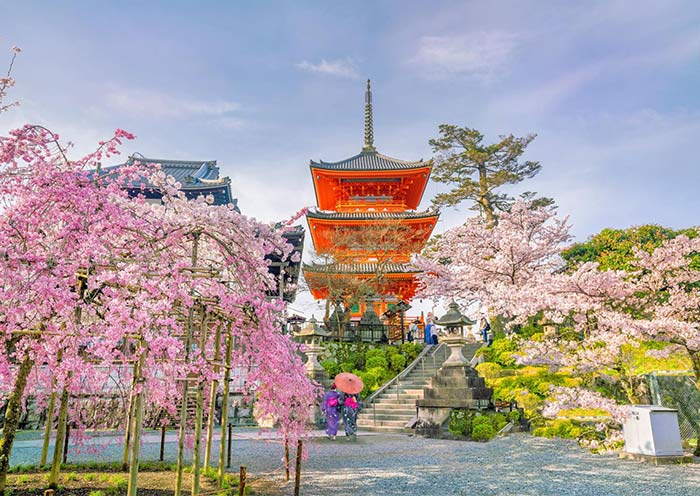


Today, you'll be visiting some of Kyoto's most iconic spots, then head to the Arashiyama and Sagano areas located in the northwest of Kyoto. This itinerary will not only allow you to deeply experience Kyoto's culture and history but also bring you closer to nature, letting you feel the changes of the seasons.
Start your day with a visit to one of Kyoto's most iconic sights, Kinkakuji Temple (Golden Pavilion) - a UNESCO World Heritage site. This Zen Buddhist temple is famous for its stunning golden exterior. The temple's stunning visual appeal comes from its top two floors, which are completely covered in gold leaf. The reflection of the golden structure shimmering in the pond in front of it makes it perfect for photos and quiet reflection. It was originally built in 1397 as a retirement villa for Shogun Ashikaga Yoshimitsu. After Yoshimitsu's death, as per his will, the villa was converted into a Zen temple by his son.
Next, head to the& Arashiyama area in the western part of Kyoto and take a ride on the Sagano Scenic Railway, also known as the “Romantic Train”. It is a sightseeing train line that runs between Arashiyama and Kameoka.On the way, the train runs along the Hozugawa River gorge, offering fantastic views of the forests and mountains. It is particularly scenic during the autumn foliage season, but in the spring passengers can enjoy the cherry blossoms, in the summer a cool breeze and the sound of cicadas, and in the winter dramatic snowy landscapes.
Exit at Arashiyama Station and walk to the nearby Arashiyama Bamboo Grove. The famous pathway is surrounded by towering bamboo, which creates an otherworldly atmosphere. This path leads you through one of Kyoto's most photographed landscapes.
After a short walk, explore Tenryuji Temple which is designated as a UNESCO World Heritage Site and is one of the so-called Kyoto Gozan or "five great Zen temples of Kyoto". Don't miss the garden, designed by the famous Zen master Muso Soseki, which reflects the concept of shakkei ("borrowed landscape"). Tips: The temple and its gardens are particularly beautiful during the cherry blossom season in spring and the colorful foliage season in autumn.
Conclude your visit to Arashiyama by walking to the Togetsukyo Bridge, an iconic historical wooden bridge offering picturesque views of the surrounding mountains and river, encapsulating the tranquil beauty of the area.
After the tour, drive back to downtown Kyoto. Stay overnight in Kyoto.
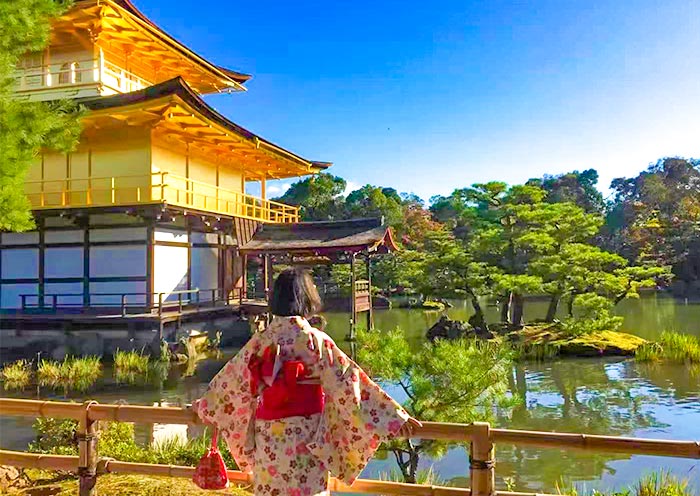

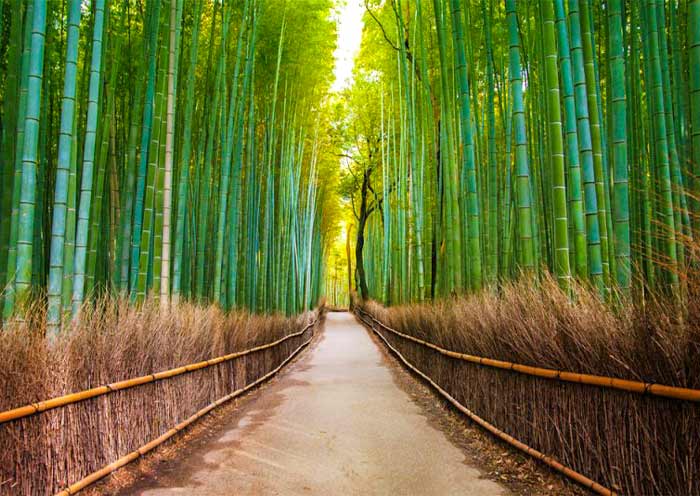

This morning, depart Kyoto for Koyasan (World Heritage), Japan’s sacred mountain. Enjoy a Mt. Koya Hike, along the way making stops at Okunoin (Japan's largest cemetery), Kongobu-ji Temple, Danjo Garan, and overnight at Koyasan Temple Lodging & dinner with Shojin Ryori.
Koyasan (Mount Koya) is the birthplace of Shingon Buddhism, a form of Esoteric Buddhism in Japan, founded over 1,200 years ago by the eminent monk Kobo Daishi (Kukai; 弘法大师/空海; 774–835) in the early Heian period. Mt Koya, surrounded by a group of mountains in the shape of a lotus flower and known as the "Peak of Eight Leaves," houses 117 temples primarily built in the Tang Dynasty architectural style, making it a unique religious city in Japan often referred to as the "Holy City in the Sky."
In 816 AD, after completing his studies in the Tang Dynasty capital of Chang'an and returning to Japan, Kobo Daishi chose Mount Koya as the site for his spiritual practice and the establishment of Shingon Buddhism. In 2004, Mount Koya was designated as a core part of the " Sacred Sites and Pilgrimage Routes in the Kii Mountain Range" and inscribed as a UNESCO World Heritage site.
Here, serene ancient paths wind through towering old trees, alongside majestic temple structures, seamlessly blending natural landscapes with cultural history. Mount Koya is not only a pilgrimage site for Buddhists but also attracts history enthusiasts (Sengoku Period in Japan; 1467-1615) and hikers.
Enjoy the Mt Koya Hike: The pilgrimage path leading to Okunoin Temple stretches 2 km from Ichinohashi Bridge to Gobyonohashi Bridge. Strolling along, it feels like a journey through a millennium of Japanese history. Ancient cedar trees, some over a thousand years old, line the path, while around 200,000 graves and stupas are scattered throughout the forest, creating a sort of "Who's Who" cemetery of Japanese history - figures like Oda Nobunaga, Toyotomi Hideyoshi, Tokugawa Ieyasu, Takeda Shingen... nearly all the heavyweight historical figures you've heard of rest here. They all long to find their own path to redemption here with Kukai (Kobo Daishi). Walking through Okunoin is like reading an entire book of Japanese history & human life. For the daring, consider joining the unique night tour at Okunoin (Optional), where in the dimly lit forest, history and mystery intertwine.
For a profound experience, the top four recommended spots to visit are: Okunoin Temple (奥之院), where Kukai taught & rests (people think Kukai is still alive), Kongobuji Temple (金刚峰寺), the head temple of Shingon Buddhism (where Kukai taught) & the biggest Karesansui (Japanese rock garden/Zen garden) in Japan, the Reihokan Museum (Optional; 灵宝馆) housing precious Buddhist artifacts, and the Danjo Garan (坛上伽蓝) representing the fundamental dojo of Shingon Buddhism.
Another highlight of Koyasan tourism is that there are 52 temple lodgings here. These lodgings not only provide quiet accommodation and vegetarian food (Shojin cuisine), but also provide spiritual practice activities such as meditation, listening to sermons, and copying scriptures. Overnight in Mount Koya.

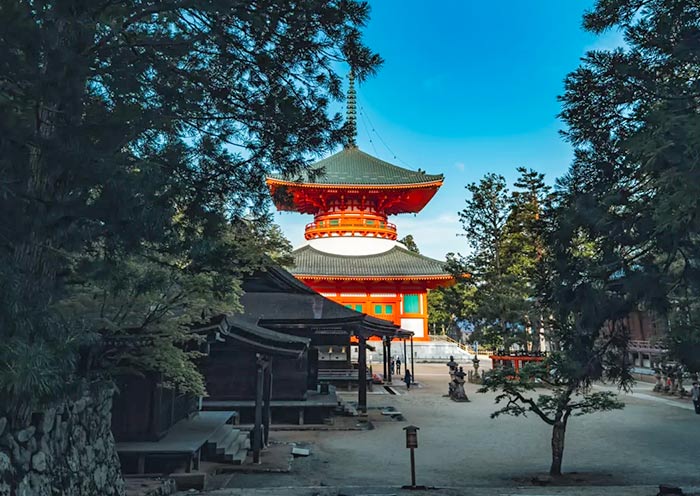

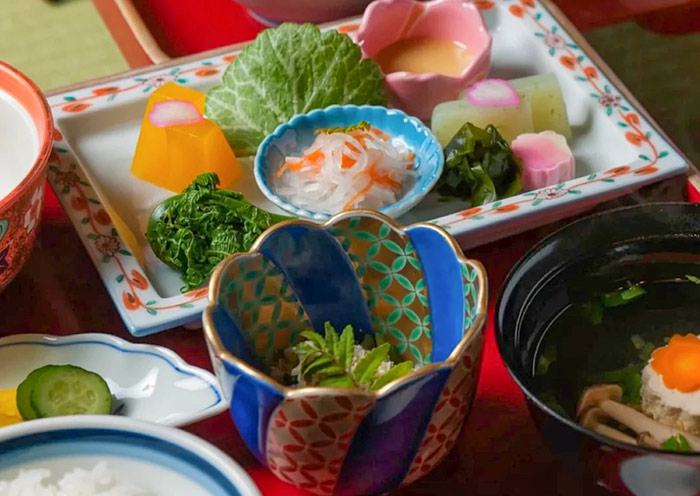
This morning, depart from Koyasa and start your hiking on the Kumano Kodo Nakahechi Trail, the most classic route for the Kumano Kodo Pilgrimage Trail. You can hike from Hosshinmon Oji to Kumano Hongu Taisha, which is about 7 km (a 2.5 to 4-hour hike). Then, visit Kumano Hayatama Taisha to conclude this wonderful day. Overnight in Nachikatsuura. Enjoy Cave Onsen (Optional) at night.
The Kumano Kodo, a UNESCO World Heritage trail in Japan, offers a transformative journey through ancient forests, misty mountains, and sacred shrines. Walk a sacred path that has been traversed for over 1,000 years by emperors, monks, and pilgrims seeking spiritual renewal. The trail’s serene beauty, cultural depth, and seasonal transformations - cherry blossoms in spring, fiery foliage in autumn - make it a timeless escape for hikers seeking both adventure and introspection.
Highlights include the grand Kumano Sanzan shrines - Kumano Hongu Taisha, Kumano Nachi Taisha, and Kumano Hayatama Taisha - each a masterpiece of Shinto architecture. Legend has it that Hayatama Taisha purifies the sins of past lives, Nachi Taisha forges bonds in the present, and Hongu Taisha secures peace for the future. Traversing the three Kumano shrines grants tranquility across past, present, and future.
Today, you will explore Kumano Hongu Taisha, the head shrine of Japan's 3,000+ Kumano shrines. As the spiritual heart of the Kumano Sanzan shrines, this ancient Shinto sanctuary dates back over 1,000 years. It was originally built at Oyunohara, a sandbar in the Kumano River, before relocating inland after a catastrophic flood in 1889. Its iconic features include Japan’s tallest torii gate (33.9 meters) at the original site and a main hall crafted using traditional kanawa-tsugi (mortise-and-tenon) joinery without nails, reflecting Heian-era architectural brilliance. The shrine is renowned for its serene and austere atmosphere, contrasting with the more ornate Hayatama Taisha.
At last, time to uncover Kumano Hayatama Taisha, which is located in the city of Shingu. This vibrant vermillion shrine is notable for its proximity to the Pacific Ocean, situated at the mouth of the Kumano River. It is home to a sacred, thousand-year-old Nagi tree, believed to bring good fortune for matchmaking and safe travels. The shrine's Treasure Hall, or Shinpokan, is a key highlight, housing over 1,200 cultural artifacts, including several national treasures, which provide deep insights into the history of the Kumano faith.
Head to Nachikatsuura for an overnight. Enjoy Cave Onsen (Optional) at night.
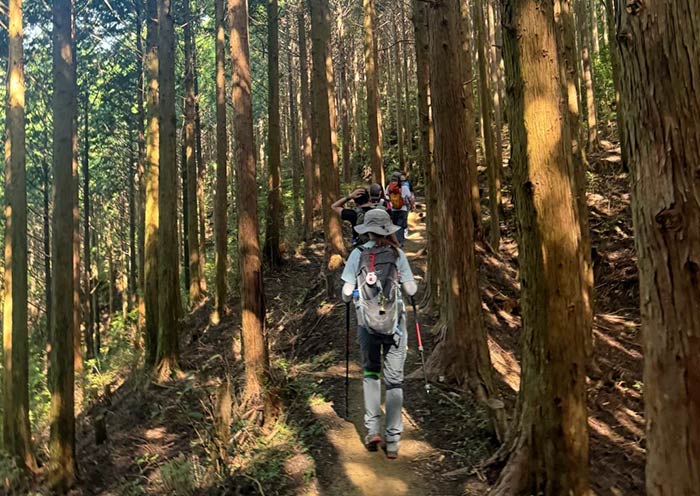

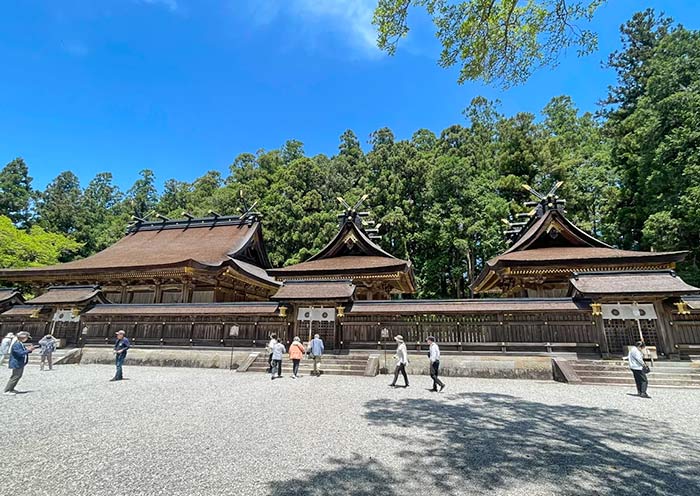

In the morning, it is optional to pay a visit to Tuna Market (Closed on Saturdays; do double check for open dates). Experience Katsuura's vibrant tuna auction at dawn! Witness sustainable Hae-Nawa fishing traditions since the 1800s. Unlike frozen imports, savor ultra-fresh tuna straight off the boats. Learn quality assessment from guides. You can enjoy an authentic fisherman's breakfast like locals: two exquisite tuna sashimi types + local veg dishes & miso soup. Pure port culture!
Then, time to go on with the hike on Kumano Kodo (World Heritage) for Kumano Nachi Taisha, Seiganto-ji & Nachi Falls. You can enjoy a 2-hour hike from Daimonzaka to Kumano Nachi Taisha. Trek the moss-covered Daimon-zaka staircase through 800-year-old cedars to reach the shrine, retracing imperial pilgrims’ steps.
Kumano Nachi Taisha, one of the Kumano Sanzan shrines, is famed for its breathtaking fusion of nature and spirituality. It is also known for its stunning location overlooking the Nachi Waterfall (133 meters), Japan's tallest single-drop cascade. Witness the iconic view of the shrine’s vermilion three-storied pagoda (Seiganto-ji) framed against the roaring Nachi Falls, embodying Shinto-Buddhist harmony. Here, the falls are worshipped as a kami (deity).
You can explore the vibrant vermilion shrine, participate in traditional rituals, and enjoy panoramic views of the lush landscape. Seasonal beauty, from cherry blossoms to autumn hues, enhances its allure. The site embodies Japan’s sacred landscapes, blending ancient rituals with natural grandeur.
You can also visit the adjacent Seigantoji Buddhist Temple (Seiganto-ji), reflecting the site's unique mix of Shinto and Buddhist beliefs. Seiganto-ji is a 4th-century Tendai Buddhist temple famed for its iconic three-story vermillion pagoda against the backdrop of Japan’s tallest waterfall, Nachi Falls.
Seiganto-ji was built by Indian monk Ragyō Shōnin and later reconstructed in 1590 by Toyotomi Hideyoshi. Its unpainted cypress-wood main hall showcases austere beauty and is a National Treasure. The temple’s ancient cedar forests, Zen garden, and sacred trail leading to Nachi Falls offer serene spiritual immersion. As the first temple of Japan’s sacred Saigoku Kannon Pilgrimage (33 temples), Seiganto-ji also hosts rituals, including autumn fire ceremonies.
Optional Activities: (If time permits)
Heian-era kimonos Experience (self-pay): You can rent Heian-era kimono near Daimon-zaka. You can don traditional attire, stroll historic trails, and immerse yourself in the ambiance, surrounded by preserved architecture—a distinctive place to engage with Wakayama’s local culture and old-world charm.
After the tour in Kumano Kodo, time to head back to Osaka.
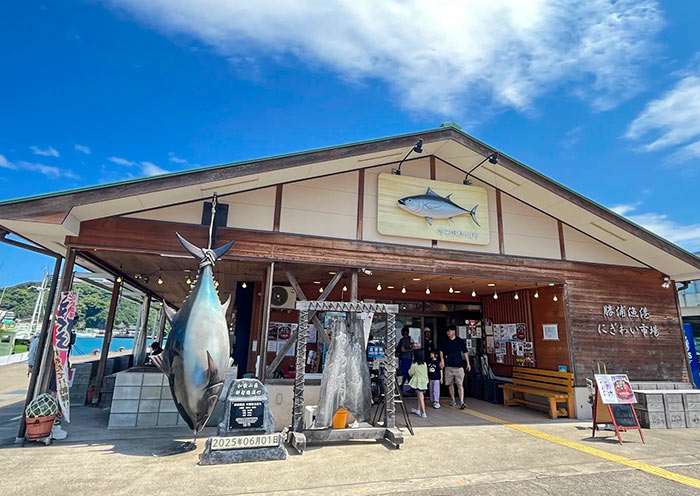

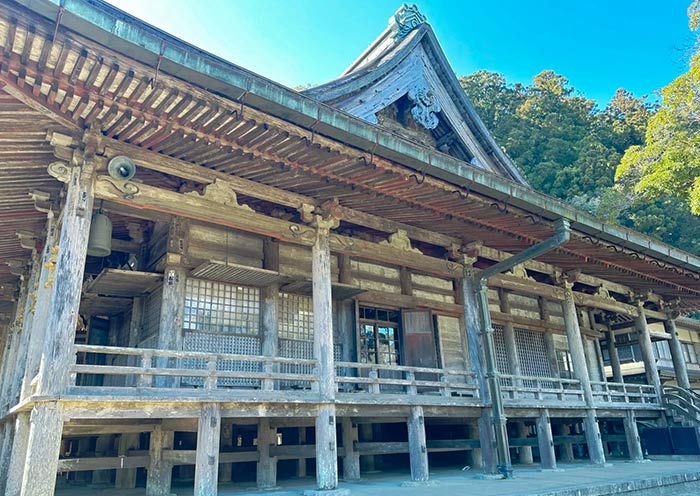
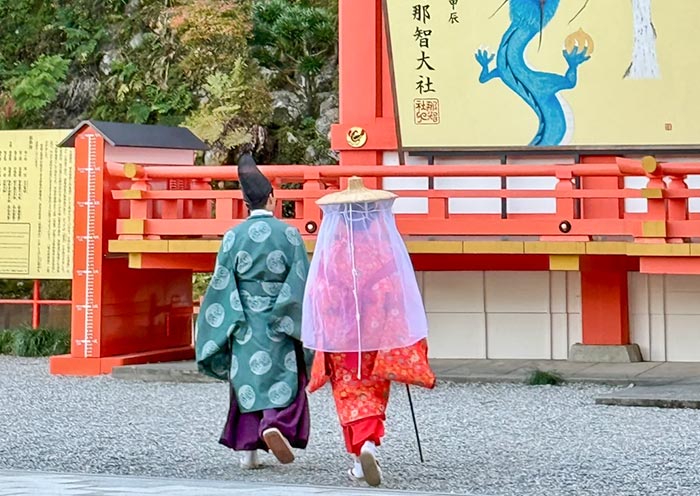
It is time to end your unforgettable 9 Days Western Japan Tour. Your driver will ensure a smooth transfer to Airport in Osaka for your departure flight.
Trip Extension: If you'd like to extend your adventures in Japan, consider exploring other notable regions like Tokyo, Hakone, etc. Feel free to contact us to customize your extended itinerary.
Thank you for choosing Asia Odyssey Travel for your tour of Asia. We are dedicated to enhancing your travel experiences and look forward to welcoming you on your next adventure in Asia. Have a safe journey home!


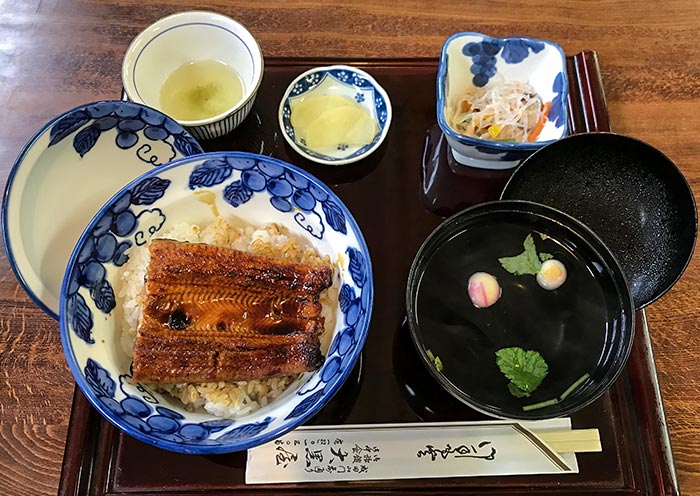
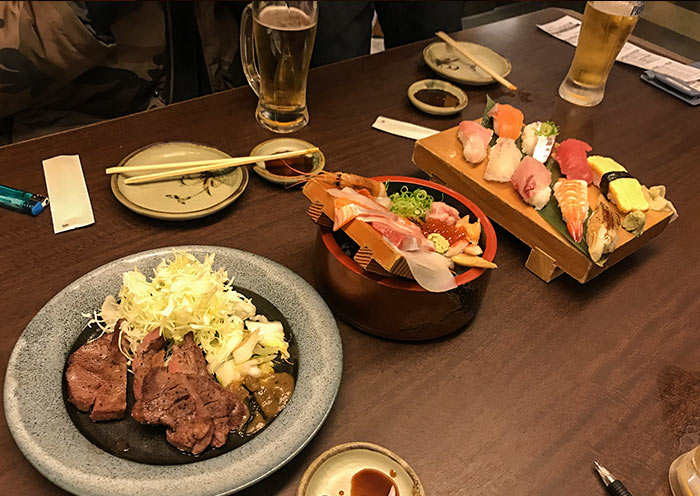
What’s Included & What’s Excluded
What's Included:
What's Excluded:
Important Travel Tips for Visiting Japan
Get the right visa. Depending on your nationality and the length of your stay, you may need to apply for a visa in advance. You can do this online or at a Japanese embassy or consulate. Many countries are part of Japan’s visa exemption program, allowing their citizens to enter Japan for short stays without a visa for tourism. Always check if your country is on this list before applying for a visa. If you have any questions, feel free to contact our travel experts for more information.
The best time to visit Japan depends on your interests:
Spring (March to May): Ideal
for witnessing the cherry blossoms and enjoying mild weather. Major cities like Tokyo, Kyoto, and Hiroshima
are particularly beautiful as cherry trees bloom spectacularly.
Summer (June to
August): Perfect for experiencing vibrant festivals such as Gion Matsuri in Kyoto,
Tanabata Matsuri across the country, and enjoying the natural beauty of Hokkaido, which is less humid than
the rest of Japan. Note that early summer (June) is the rainy season.
Autumn (September to
November): Offers stunning fall foliage, making it a great time for hiking and temple
visits. The weather is cool and pleasant, ideal for outdoor activities.
Winter (December to
February): The best time for winter sports, especially in regions like Hokkaido and the
Japanese Alps. Onsens (hot springs) are also a popular attraction during the cold months.
Bring Cash. Despite advances in digital payment, many smaller vendors, temples, and rural
areas operate predominantly with cash. It’s wise to keep some yen on hand at all
times.
Universal Travel Adapter. Japan uses 100V with two straight thin
pins.
Passport: Ensure it’s valid for at least six months beyond your date
of travel.
Visa (if required): Make sure you have the right visa for your
travel.
Travel Insurance Information: Always good to have on hand.
Bow when greeting: A slight bow is a common way to say hello, thank you, or
sorry.
Be mindful of your noise level: Japanese culture values quietness,
especially in public transportation and residential areas.
Follow the rules: Whether
it's waiting in line or adhering to signage, following local rules and etiquette is highly
valued.
Etiquette in temples and shrines: Wear modest clothing and follow specific
customs such as washing hands and mouth before entering a shrine or temple. Photography might be restricted
in sacred areas.
Looking for more travel guides for first-time visitors to Japan? Want to gather additional information to plan your trip? Our team of professional travel experts has written over 40 articles about Vietnam. Please check out ourJapan Travel Guide for inspiration and detailed insights.
Hotel Conditions for Your Japan Tour
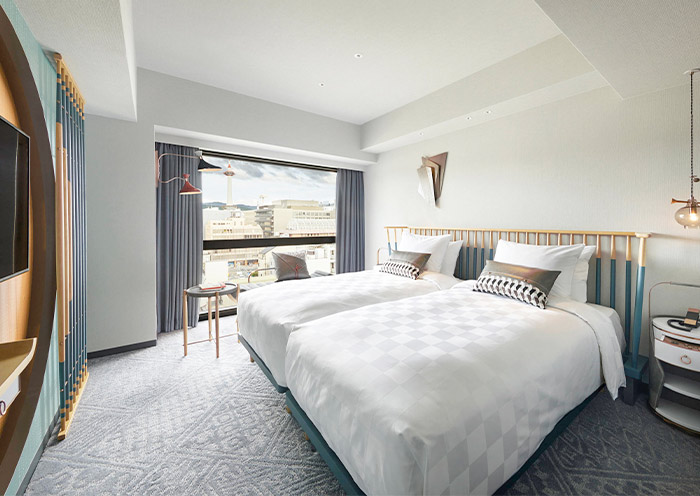


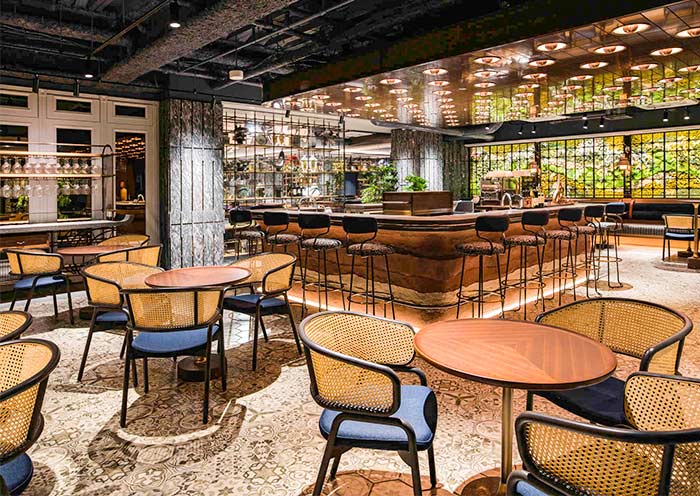
We offer a range of accommodation options to suit various preferences and budgets: luxurious 5-star hotels, comfortable 4-star hotels, and economical 3-star hotels. Our selected hotels are conveniently located close to the city center or popular tourist spots.
For those seeking a more distinctive lodging experience, we also offer Traditional Ryokans, Machiya, Onsen (hot springs) Hotels, etc. If you have specific needs or preferences, please consult with your travel advisor.
Tips: Be aware that hotel room sizes in Japan may be smaller compared to those in other developed countries due to the scarcity of land. If your budget allows, it is recommended to opt for a higher category of hotel, which will generally offer more comfort.
Photo Gallery for This Itinerary
Latest Japan Tours Reviews from Our Customers

Jess
Malaysia
Destination(s): Beijing, Xian, Shanghai, Zhangjiajie
Date of Experience: Sep 04, 2025
Tour Customized by: Yee
You May be Interested in This Tour: 26 Days In-Depth Vietnam China Japan Tour: Ultimate Asia Contrast

Claudia Konrado
Brazil
That’s when a friend recommended Asia Odyssey Travel (AOT), and it was the best decision we made! Not only did they completely customize our entire trip, but they did so at a perfectly reasonable cost. Our travel agent, Abby, was absolutely incredible. She worked tirelessly with us to build out an itinerary, patiently answering all our questions, offering guidance, making changes, and adding new ideas with such care and professionalism. From Disney and Universal for the teens to visits to TeamLab Planets, museums and temples and shopping excursions, ending with a relaxing beach time in Okinawa, Abby worked with us and ensured there was something wonderful for everyone. Even during the trip, she was always available to help and provide support. I truly can’t express how much Abby made a difference in our experience. The entire team at AOT, from the guides to the drivers, was consistently helpful and attentive, ensuring every moment of our journey was smooth and enjoyable. We are so grateful for the wonderful memories created, all thanks to the dedication and expertise of AOT team. We highly recommend them for an exceptional travel experience.
Date of Experience: Jul 01, 2025
Tour Customized by: Abby
You May be Interested in This Tour: Customized Tour

Cheers
Britain
I’m so glad we chose to do this tour! We were looking for a way to escape the summer heat, and Hokkaido was a dream come true. The air was so fresh and the scenery was just incredible—I swear my photos don’t even do it justice.
The highlight for me was definitely the lavender fields in Furano. They were even more beautiful in person than in all the pictures you see online. Our private guide knew the best spots to get a great view without fighting the crowds. Plus, we got to see all the other rainbow flower fields in Biei which were just as amazing.
The trip was super relaxing because we didn't have to worry about a thing. Our driver was so professional, and it was a huge relief to have a private car just for our family. It made getting between all the different towns so easy. We loved exploring the charming canal in Otaru and getting to eat all the fresh seafood in Sapporo. The food in Hokkaido is seriously on another level!
Date of Experience: Jun 10, 2025
Tour Customized by: Cheers
You May be Interested in This Tour: 8 Days Hokkaido Summer Tour: Colorful Family Vacation on Hokkaido Island
Price: From USD Request pp
(Based on a private tour for 6 persons staying in 4-star hotels. Prices may vary depending on the itinerary, travel dates, and group size. )
(Book at least 6 months in advance)

